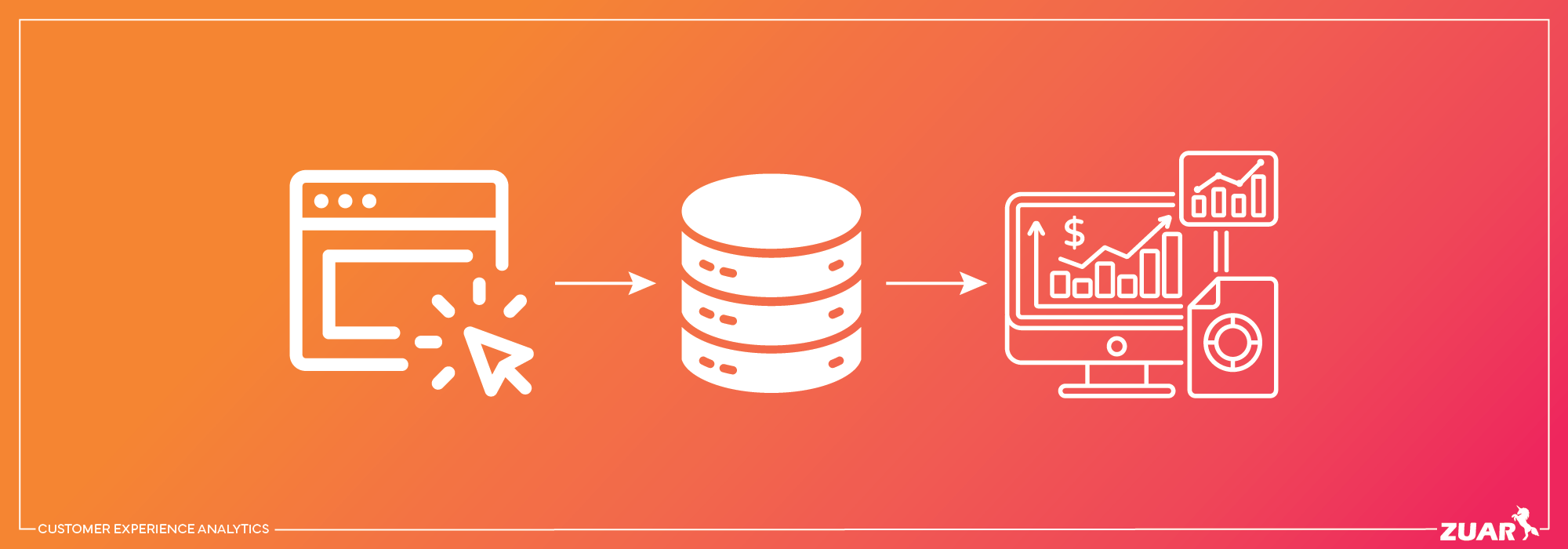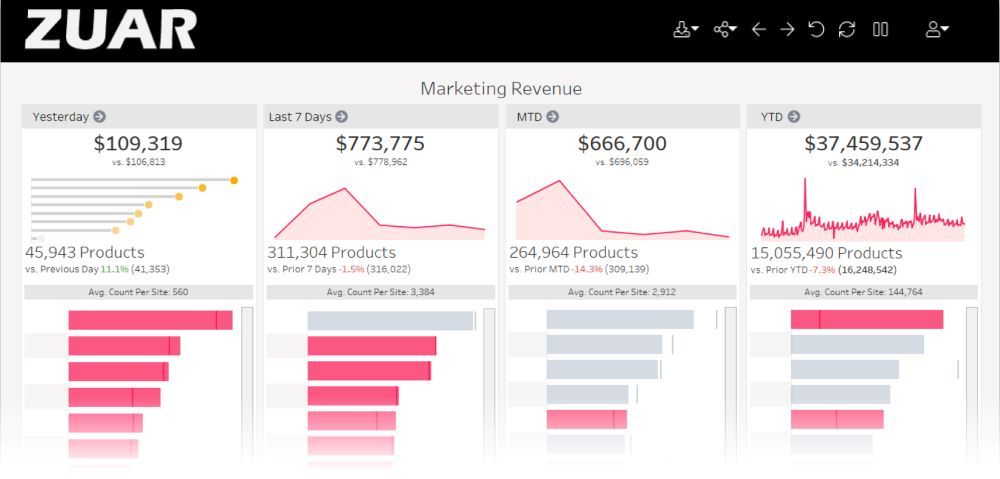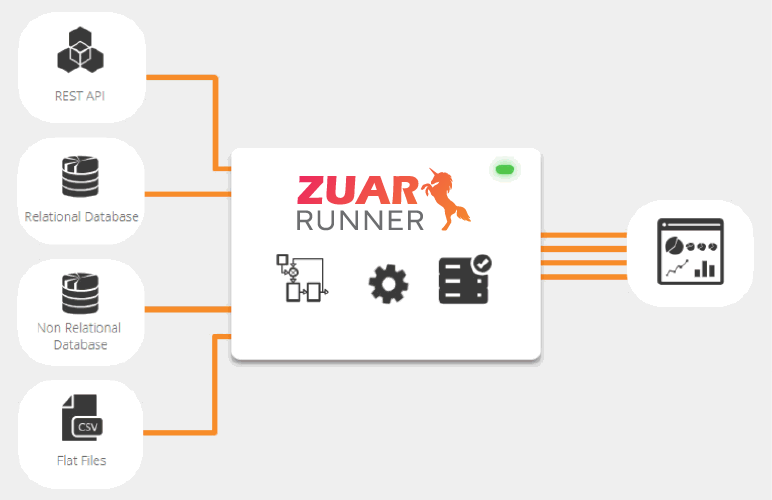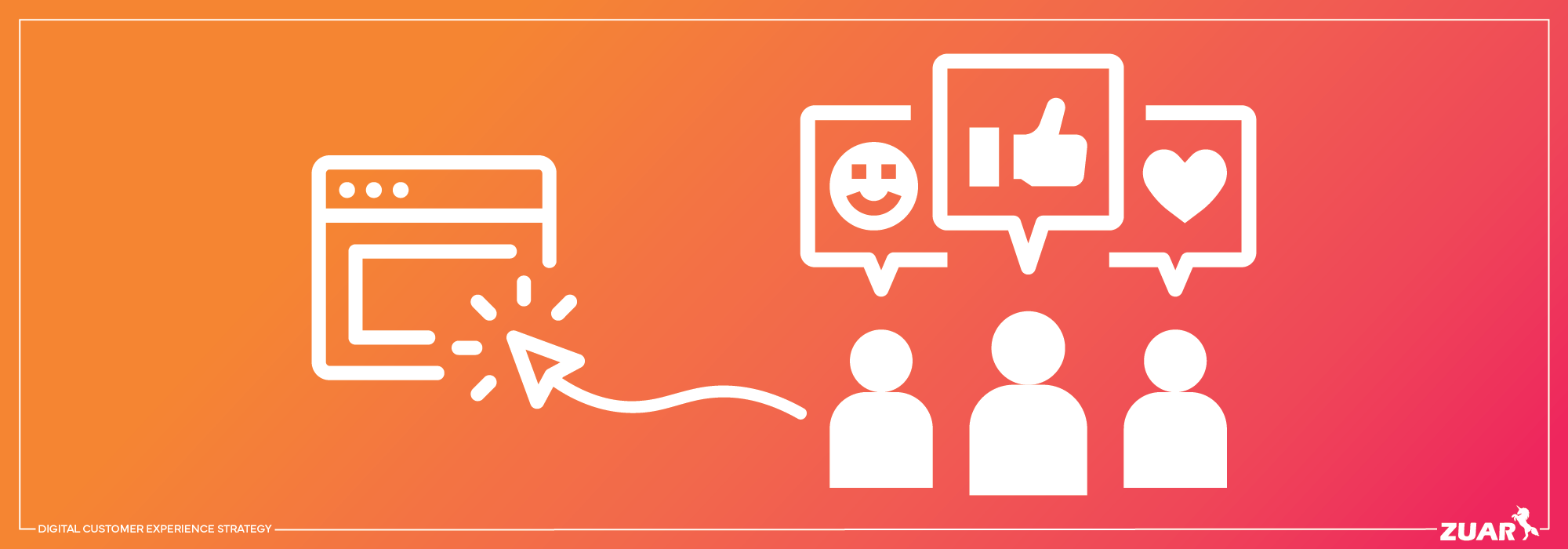What Is Customer Experience Analytics? A 2025 Guide
Learn what customer experience analytics are and how you can leverage them to improve customer loyalty and drive revenue.

Why are customer experience analytics essential? How can they drive your business forward? Why is the customer experience so important? This guide will seek to answer those questions.
We'll break down why analyzing customer interactions matters, from mapping out the customer journey to optimizing every touchpoint for increased loyalty and satisfaction.
Expect to find practical insights on employing analysis to improve customer relationships in a constantly evolving marketplace by analyzing the customer experience.
Decoding Customer Experience Analytics
Understanding the customer’s journey is akin to navigating a complex labyrinth. Each turn represents a touchpoint, an interaction that can make or break a customer’s relationship with a brand.
Customer experience analytics serves as the map, guiding businesses through this maze to:
- Foster enduring relationships with their customers
- Identify pain points and areas for improvement
- Optimize customer interactions
- Personalize the customer experience
- Ultimately increase customer satisfaction and loyalty
The Role of Analytics in Customer Experience
Analytics plays a pivotal role in enhancing customer experience by providing businesses with valuable insights into customer behaviors, preferences, and interactions.
Through the analysis of data generated across various touchpoints, businesses can gain a comprehensive understanding of the customer journey.
Analytics enables the identification of patterns, trends, and areas for improvement, allowing organizations to tailor their products, services, and communication strategies to better meet customer needs.

By leveraging analytics, businesses can personalize customer interactions, predict future behaviors, and proactively address issues, ultimately leading to a more seamless and satisfying customer experience.
Additionally, analytics contributes to the continuous improvement of customer engagement strategies, enabling businesses to stay agile and responsive to evolving customer expectations in the dynamic digital landscape.
Watch this video to learn more about mastering the digital customer experience:
Leveraging Data for Personalized Service
The objective in navigating the labyrinth of customer experience isn’t solely about finding an exit. It’s more about curating a memorable and personalized journey for every customer.
Here, customer experience analytics take the role of a skilled guide, using insights to craft personalized experiences that cater to each customer’s unique needs.
By integrating website analytics with customer feedback, businesses can:
- Delve deeper into their customer data, pinpointing the underlying reasons for customer behavior
- Develop customized offerings and interactions that align with customer expectations
- Enhance the overall customer experience.

Types of Customer Experience Metrics
Customer experience metrics are key performance indicators (KPIs) that help businesses assess and improve the quality of interactions between customers and their products or services. Some common types of customer experience metrics include:
- Net Promoter Score (NPS): Measures the likelihood of customers recommending a product or service to others, providing insights into overall customer satisfaction and loyalty.
- Customer Satisfaction (CSAT): Gauges the level of satisfaction customers have with a specific interaction, transaction, or overall experience.
- Customer Effort Score (CES): Assesses the ease with which customers can complete a specific task or achieve their goals, reflecting the simplicity and efficiency of the customer journey.
- Retention Rate: Tracks the percentage of customers who continue to use a product or service over time, indicating customer loyalty and long-term engagement.
- Churn Rate: Measures the percentage of customers who stop using a product or service, highlighting potential issues in customer retention.
- Average Handling Time (AHT): Evaluates the average time it takes for customer service representatives to resolve customer issues, indicating efficiency in problem resolution.
- First Contact Resolution (FCR): Measures the percentage of customer issues resolved during their initial interaction with customer support, reflecting the effectiveness of support processes.
- Customer Lifetime Value (CLV): Calculates the total value a customer is expected to bring to a business over their entire relationship, helping assess the long-term impact of customer interactions.
- Customer Acquisition Cost (CAC): Determines the cost associated with acquiring a new customer, providing insights into the efficiency of marketing and sales efforts.
- Social Media Mentions: Monitors customer mentions, reviews, and feedback on social media platforms, offering real-time insights into brand perception and customer sentiment.
- Conversion Rate: Measures the percentage of customers who take a desired action, such as making a purchase or signing up for a service, indicating the effectiveness of the customer journey.
These metrics, when used collectively, offer a comprehensive view of the customer experience, enabling businesses to identify areas for improvement and optimize strategies to meet customer expectations.

Essential Features of Customer Experience Software
Selecting the customer experience tools that best fit your needs is paramount.
Features such as real-time feedback analysis, predictive customer behavior modeling, and seamless integration with CRM and other systems can be instrumental in optimizing the customer experience.
Real-Time Feedback Analysis
For effective navigation through the labyrinth of customer experience, businesses need to stay attuned to customer feedback.
Real-time feedback analysis is the process of collecting, interpreting, and responding to customer feedback immediately as it is provided, allowing businesses to promptly address issues, make informed decisions, and enhance the customer experience in real-time.
This rapid response capability plays a crucial role in enhancing the overall customer experience.
Predictive Customer Behavior Modeling
Within the context of customer experience, predicting the future isn’t akin to possessing a mystical power, rather, it’s a strategic lever.
Predictive customer behavior modeling, such as AI and predictive analytics, provides businesses with the capability to forecast customer needs and preferences.
This enables the development of customized offerings and interactions that align with customer expectations and enhance the overall customer experience.
Integrations with CRM and Other Systems
Within the complex puzzle of customer experience, every turn, each interaction, contributes a piece. To solve this puzzle, businesses need a holistic view of customer data.
Integrating CRM and other systems is crucial as it enables a comprehensive view of customer data and supports efficient operations. This can be done efficiently by implementing an ETL/ELT platform to automate the data collection and integration process.
By utilizing an ELT platform like Zuar Runner, businesses can seamlessly extract, load, and transform data from various sources into a unified format, ensuring that the pieces of customer data fit together cohesively.
Learn more about Zuar Runner:


Advantages of Implementing Customer Experience Analytics Tools
Implementing customer experience solutions offers several advantages for businesses:
- Insightful Decision-Making: Analytics tools provide data-driven insights into customer behaviors, preferences, and interactions, empowering businesses to make informed decisions and optimize strategies for enhanced customer satisfaction.
- Personalization Opportunities: By understanding individual customer journeys, businesses can tailor their products, services, and communication to meet specific customer needs, fostering personalized and meaningful interactions.
- Improved Customer Satisfaction: Analytics tools enable the identification of pain points and areas for improvement in the customer journey, allowing businesses to address issues proactively and ultimately enhance overall customer satisfaction.
- Efficient Resource Allocation: Businesses can optimize resource allocation by identifying high-impact areas through analytics, ensuring that efforts and investments are directed toward initiatives that positively impact the customer experience.
- Customer Retention: Understanding customer preferences and addressing pain points contributes to improved customer retention rates, as businesses can take proactive measures to keep customers engaged and loyal.
- Enhanced Product Development: Analytics tools provide valuable feedback on product performance and customer preferences, guiding businesses in refining existing offerings and developing new products that align with customer expectations.
- Measurable ROI: Implementing analytics tools allows businesses to track the impact of customer experience initiatives, providing measurable insights into the return on investment (ROI) and the effectiveness of implemented strategies.
Overall, customer experience analytics tools empower businesses to create data-driven strategies, cultivate customer-centric cultures, and continually refine their approaches to meet and exceed customer expectations.

Best Practices in Analyzing Customer Sentiment
To ensure that your strategy around customer experience analytics has the best chance to succeed, it is important to follow best practices.
These include utilizing natural language processing, social media sentiment analysis, and deriving insights from unstructured feedback.
Utilizing Natural Language Processing
To truly understand customer sentiment, businesses need to go beyond numbers and delve into the world of words.
This is where Natural Language Processing (NLP) comes into play. It allows organizations to effectively interpret and analyze customer feedback, extract conversational insights, and identify various topics and subtopics within customer interactions.
Social Media Sentiment Analysis
Social media platforms are like vantage points in the labyrinth of customer experience. They offer a bird’s eye view of customer sentiment, allowing businesses to assess a consumer’s viewpoint on a product, service, or brand.
Deriving Insights from Unstructured Feedback
Unstructured feedback is like the hidden clues in the labyrinth. While they may not be easy to find or interpret, they often hold the key to understanding the customer experience.
Advanced analytics tools can help businesses extract valuable insights by analyzing customer feedback from unstructured sources, such as open-ended survey responses and customer reviews.

Step-by-Step Guide to Customer Journey Mapping with Analytics
Navigating the intricate labyrinth of customer experience presents a formidable task. However, equipped with a detailed map, businesses can gain a deeper understanding of the customer journey and make strategic decisions accordingly.
This section provides a step-by-step guide to creating customer journey maps using analytics.
Capturing Touchpoints Across the Customer Lifecycle
The first step in creating a customer journey map is to identify and analyze touchpoints across the customer lifecycle. These touchpoints represent the various interactions that a customer has with a brand, from the initial contact to the post-purchase follow-up.
Creating Actionable Customer Personas
Once the touchpoints are identified, businesses can use analytics to create detailed customer personas. These personas represent the different types of customers that a business serves, providing valuable insights into their behaviors, preferences, and needs.
Optimizing Conversions Through Analytics-Driven Insights
Armed with a detailed map of the customer journey and a set of customer personas, businesses can now focus on optimizing their conversion strategies.
With the list of these detailed personas, businesses can utilize personalization techniques more effectively, tailoring their marketing efforts, product offerings, and customer interactions to meet the unique needs and preferences of different segments.
Related Article:


Customer Experience Analytics Tools
The right tools can significantly ease the navigation through the labyrinth of customer experience.
Businesses require dependable customer experience analytics tools for gathering, analyzing, and visualizing customer to take away actionable insights that enhance customer experiences.
The Zuar Suite

Zuar offers two powerful tools to enhance customer experience analytics — Zuar Portal and Zuar Runner.
Zuar Portal acts as a centralized command center, seamlessly integrating data visualizations from platforms such as Tableau and Power BI to create a cohesive and branded analytics solution.
Meanwhile, Zuar Runner can connect to hundreds of potentially disparate systems to automate the flow of data to a centralized repository.
These products can be used in conjunction to collect customer data from numerous sources, centralize it to a single location, and create a one-stop shop for customer insights that facilitates a deeper understanding of customer behavior.
Adobe Experience Manager

Adobe Experience Manager is a comprehensive customer experience platform that offers powerful analytics, content management, and personalization features.
This platform integrates contact center, content management, and analytics tools into a unified platform to deliver sophisticated digital customer experiences.
Zendesk Analytics Suite

Another noteworthy tool is the Zendesk Analytics Suite. This customer experience analytics solution provides insights into customer interactions, helping businesses improve their customer support and overall experience.

Optimizing Your Customer Experience Analytics
In the realm of customer experience analytics, harnessing the power of data is paramount, and Zuar emerges as a pivotal player offering innovative solutions.
Crafting an effective strategy around your customer experience analytics can be a difficult task, especially if you don't have the required expertise in-house, but that's where Zuar Labs, our team of data experts, can help.
We can help you transform raw data into compelling narratives through a spectrum of services, ranging from data strategy and architecture to data visualization and enablement.
As organizations navigate the landscape of customer experience analytics, Zuar's comprehensive suite of tools and expert services emerges as a strategic ally, empowering businesses to make data-driven decisions, enhance brand impact, and elevate the overall customer journey.
Meet with one of our friendly data experts to learn more!


Frequently Asked Questions
What is data analytics for customer experience?
Data analytics for customer experience involves collecting and analyzing customer data to understand their needs and experiences, then using advanced technologies to personalize the customer experience and improve satisfaction.
How do I create a customer experience dashboard?
To create a customer experience dashboard, start by defining your goals, KPIs, and metrics. Then, choose relevant data sources, organize your data, and analyze the results to make informed decisions.
What are the benefits of using customer experience analytics tools?
Using customer experience analytics tools provides businesses with comprehensive data to better understand and address customer needs and preferences, ultimately improving the overall customer experience.
What is Natural Language Processing (NLP) and how is it used in customer sentiment analysis?
NLP is used in customer sentiment analysis to interpret feedback, extract insights, and identify topics within customer interactions.


